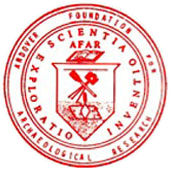Summer 2025 Project
Archaeology in the Marquesas
June 21 - July 27, 2025
The Hanamiai archaeological site.
Learn About The Project
Verdant forests, rugged peaks, and turquoise seas. The Marquesas are one of the best known yet least visited archipelagoes in the South Pacific. The Polynesian discovery of these stunningly beautiful islands around 800 years ago represents one of humanity's momentous achievements, and that was only the beginning. By the time Captain Cook reached these shores shores in 1774, Marquesan chiefdoms were distinguished by their monumental architecture and a religious system in which important ceremonies demanded human sacrifices. Marquesan art is world-renowned and it has inspired generations of Western artists, including Paul Gauguin.
Vaitahu (left with village) and Hanamiai (right with sports center) Valleys on Tahuata, Marquesas Islands.
Beginning with Cook's expedition, museums throughout Europe and America have sought out Marquesan art and artifacts. Yet while Western museums hold great numbers of these treasures, until recently there was no museum for the Marquesan people themselves. That was the inspiration for Te Ana Peua, the museum at the center of our 2025 Marquesas project.
Te Ana Peua is in the heart of Vaitahu, the main village on Tahuata, one of the most remote and traditional islands in the Marquesas. On the coast of nearby Hanamiai Valley lies one of the richest and most extensively studied archaeological sites in Polynesia. There, hidden beneath the roots of coconut palms, is a captivating record of daily life in the Marquesas dating back to initial Polynesian discovery around 1200-1300 AD.
Te Ana Peua is the first community-based archaeology museum in French Polynesia.
AFAR's long-running Marquesas project is a collaborative effort in which an international team of students works closely with the local community, under the direction of University of Hawai‘i archaeologist Barry Rolett.
We develop all of the exhibits ourselves, from selecting the artifacts to designing the layout and mounting the display.
Through our excavations at Hanamiai, Te Ana Peua now has one of the best collections of Marquesan artifacts in the world. During this year's project, we will collaborate with our local team (the same team engaged in the excavations) to design and mount new exhibits for the museum. We will also take on some outdoors projects (e.g. site survey) to vary our schedule and to give students a chance to work on some of the well-preserved monumental architecture for which the Marquesas is famous.
Joseph Barsinas teaches Shingo Suzuki how to attach artifacts for a display of fishhooks.
Marquesans are bilingual. They learn Marquesan at home and French at school.
Our headquarters are in the picturesque village of Vaitahu, on Tahuata (Gauguin lived and painted nearby on Hiva Oa). There are no hotels (just a grass-shack style restaurant for yachties and a local store stocked with cold drinks, etc.). There is also essentially no service economy. Our hosts are the 400 wonderful inhabitants of this unforgettable world. We'll live just a short walk to the beach, in a rented house with modern kitchen and toilet facilities (albeit cold water showers scarcely a problem in this tropical climate).
Samuel Tiaiho works on a display that includes artifacts he discovered during the Hanamiai excavations.
Barry Rolett, Project Director and Te Ana Peua Museum cofounder with field school students Michelle Kim and Emily Lowe.
Field School Overview
Who can apply? Students and members of the general public. Preference given to applicants with French language skills and course work in anthropology and archaeology.
Where? Vaitahu Village, on Tahuata in the southern Marquesas, French Polynesia
When? June 21 – July 25, 2025.
Contact: Dr. Barry V. Rolett rolett@hawaii.edu
Project Director: Barry V. Rolett. Dr. Rolett is Professor of Anthropology at the University of Hawai‘i and he also serves as President of the Andover Foundation for Archaeological Research. He is a specialist in the archaeology of Polynesia and southeast China. Dr. Rolett graduated from Phillips Academy Andover and Pomona College (1980). He received his Ph.D. from Yale University in 1989 and joined the University of Hawai’i faculty during the same year. He taught at Harvard University (1998/99, 2000/01) and Keio University (Japan) (2015, 2018) as Visiting Professor.
Dr. Rolett first visited the Marquesas in 1981 during a year-long Thomas J. Watson Fellowship project that involved retracing Captain Cook's route through the South Pacific.
All artifacts discovered during the Hanamiai excavations are conserved and exhibited on Tahuata.
White sand deposits of the Hanamiai Dune allow for the extraordinary preservation of artifacts made of shell and bone.
Trolling lure shanks and points discovered during the Hanamiai excavations. Artifacts such as these from the deepest deposits at Hanamiai date to the time of the earliest Polynesian settlement of the Marquesas, 700 - 800 years ago.













